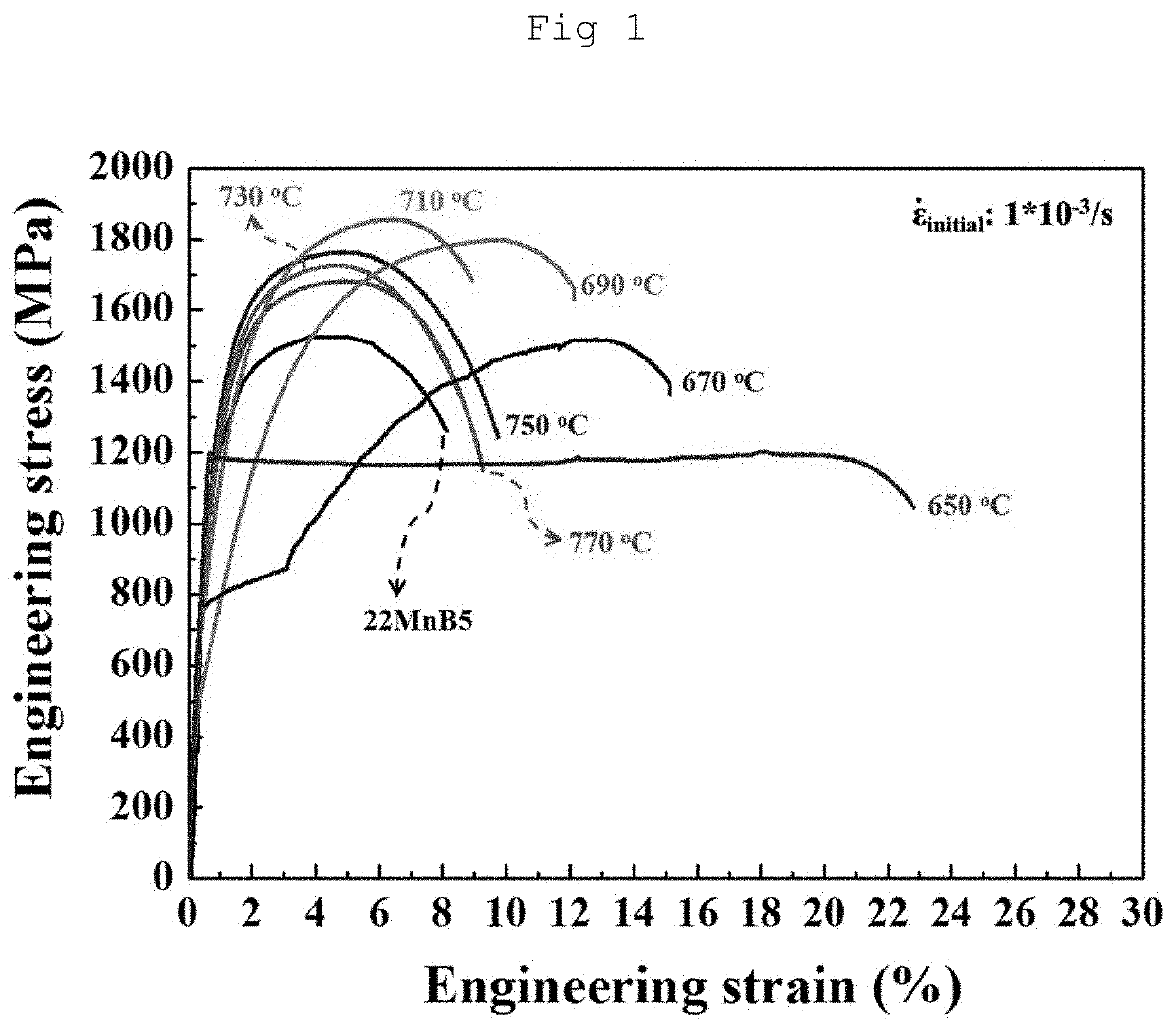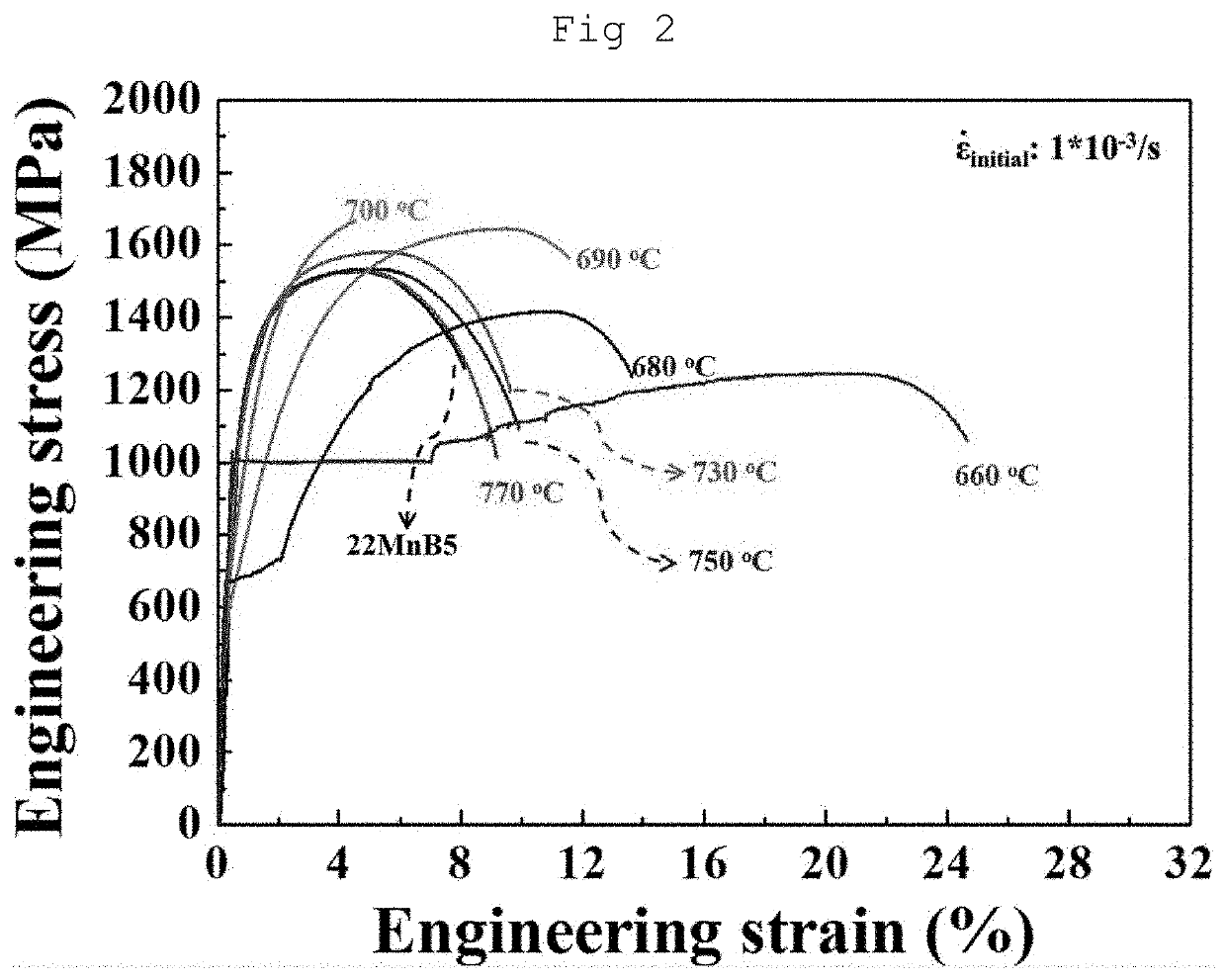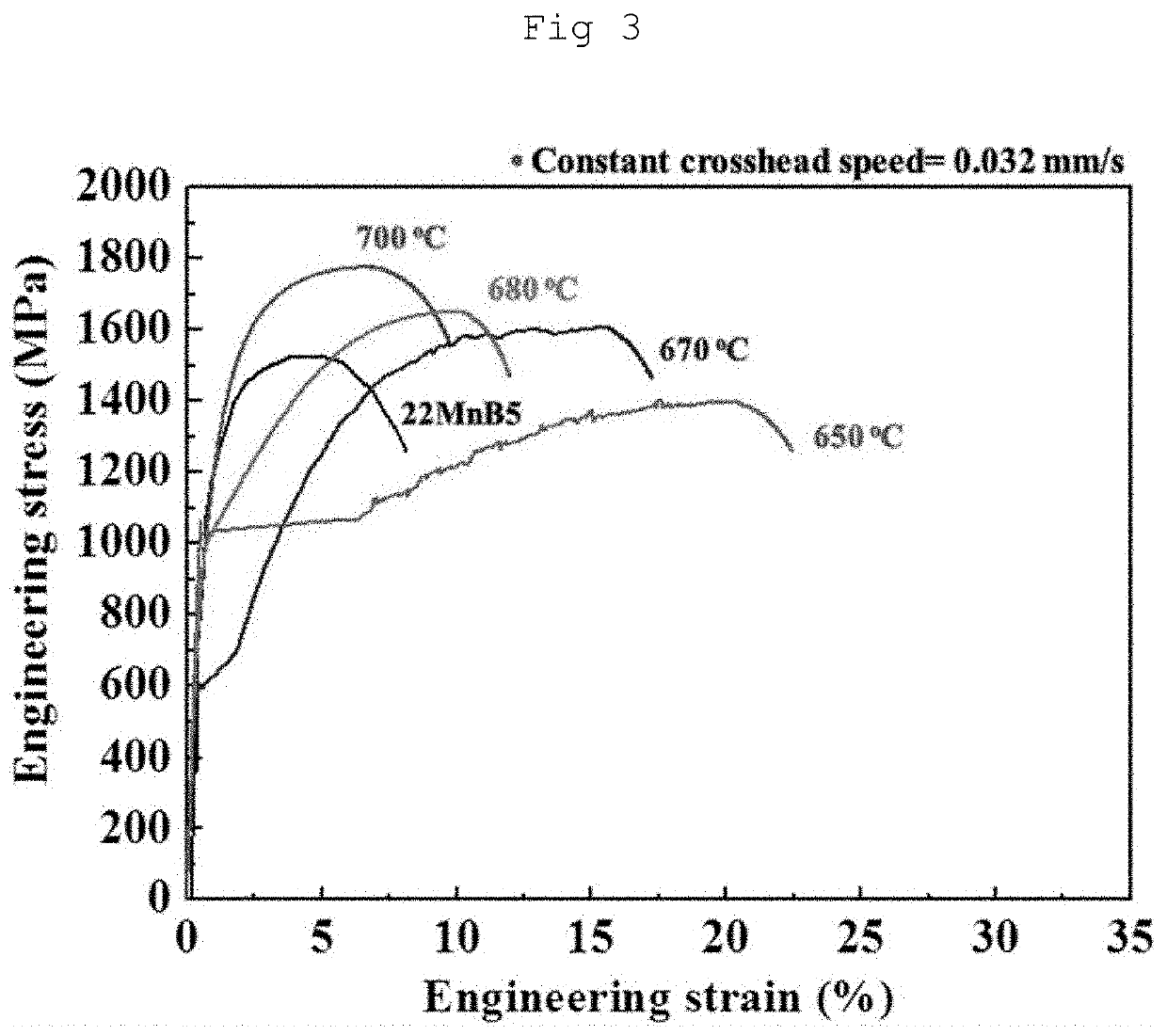High-strength medium manganese steel for warm stamping and method for manufacturing same
a technology of high-strength medium manganese steel and warm stamping, which is applied in the direction of manufacturing tools, heat treatment equipment, furniture, etc., can solve the problems of high thermal energy consumption, inability to obtain hard martensite structures without boron-added steel, and the art hot stamping process poses several problems, so as to achieve the effect of reducing the high thermal energy consumption of the prior art hot stamping process, enhancing strength and reducing heat loss
- Summary
- Abstract
- Description
- Claims
- Application Information
AI Technical Summary
Benefits of technology
Problems solved by technology
Method used
Image
Examples
example 1
[0086]Each steel slab having a composition shown in Table 1 was heated for 1 hour in a reheating temperature range of 1100-1250° C. and then hot-rolled. At this time, hot rolling was terminated at 900-1000° C., and air cooling was performed up to room temperature. The produced hot-rolled sheet was cold-rolled at a cold rolling thickness reduction percentage of 55% to produce a cold-rolled sheet.
[0087]The cold-rolled sheet produced as described above was used based on the simulation of the heat treatment conditions of a warm stamping process. Heat treatment was performed for 10 minutes while the temperature was varied within the range from the temperature T50, at which the ratio between ferrite and austenite becomes 1:1 in the heat treatment dual-phase region, to an austenite single-phase region temperature higher than the A3 temperature by 50° C., and air cooling was performed up to room temperature. In this case, the heating rate was 3° C. / sec and the cooling rate was 10° C. / sec.
TA...
example 2
[0091]In Example 1, cold-rolled inventive steel A was additionally subjected to annealing heat treatment CA. Heat treatment conditions were 650-750° C. and 3 minutes, and heat treatment was performed while the temperature was varied. The cold-rolled annealed steel sheet was treated, with the heat treatment conditions of a warm stamping process subdivided into austenitizing temperature TA and forming temperature Ts. The austenitizing temperature was 650-750° C. for 5 minutes, the molding temperature was 650-750° C. for 1 minute, and the treatment was performed while the temperature was varied. After the heat treatment, air cooling was performed up to room temperature. In this case, the heating rate was 3° C. / sec and the cooling rate was 10° C. / sec.
TABLE 6Heat treatmentYieldTensileTotalType oftemperature (° C.)strengthstrengthelongationsteelCATATS(MPa)(MPa)(%)A-87507507001085181011.6A-96501070182011.6A-106001040174010.2A-115501065178011.2A-12700650530163014.0A-13600510165016.5A-145505...
example 3
[0093]In Example 3, unlike in Examples 1 and 2, inventive steel A was processed into a hot-rolled steel sheet without cold rolling. Inventive steels A-38 and A-39 were subjected to annealing heat treatment at 750° C. for 3 minutes. Thereafter, the steel sheet was processed, with the heat treatment conditions of a warm stamping process subdivided into austenitizing temperature TA and molding temperature TS. The austenitizing temperature was 650-750° C. for 5 minutes, the molding temperature was 600° C. for 1 minute, and the treatment was performed while the temperature was varied. After the heat treatment, air cooling was performed up to room temperature. In this case, the heating rate was 3° C. / sec, and the cooling rate was 10° C. / sec.
TABLE 7Heat treatmentYieldTensileTotalType oftemperature (° C.)strengthstrengthelongationsteelCATATS(MPa)(MPa)(%)A-38X7506001025163010.3A-39650950110023.3A-40750750105016707.4A-41650900115025.4
[0094]As shown in Table 7, it was confirmed that the anneal...
PUM
| Property | Measurement | Unit |
|---|---|---|
| volume fraction | aaaaa | aaaaa |
| volume fraction | aaaaa | aaaaa |
| temperature | aaaaa | aaaaa |
Abstract
Description
Claims
Application Information
 Login to View More
Login to View More - R&D
- Intellectual Property
- Life Sciences
- Materials
- Tech Scout
- Unparalleled Data Quality
- Higher Quality Content
- 60% Fewer Hallucinations
Browse by: Latest US Patents, China's latest patents, Technical Efficacy Thesaurus, Application Domain, Technology Topic, Popular Technical Reports.
© 2025 PatSnap. All rights reserved.Legal|Privacy policy|Modern Slavery Act Transparency Statement|Sitemap|About US| Contact US: help@patsnap.com



